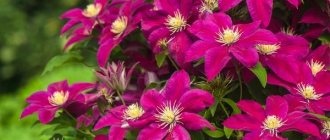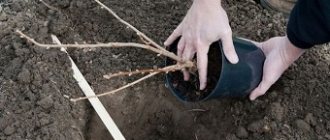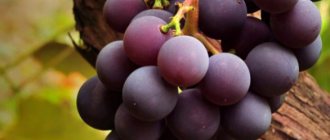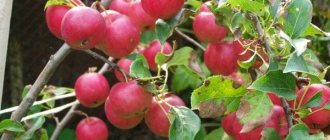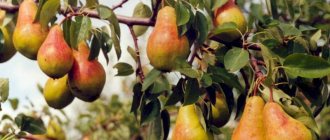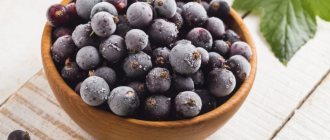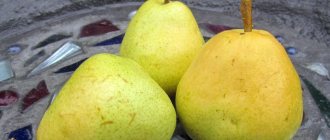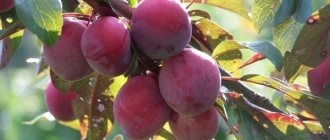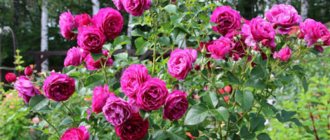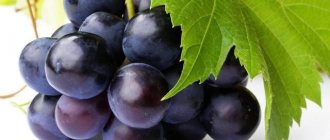Choosing the optimal variety of blackcurrant for a summer cottage is not an easy task. Because there are over 200 varieties of berry bushes. To avoid mistakes, experienced gardeners advise planting three or four plants with different periods of fruit ripening. And thus, the harvest time will last all summer, and it will also become clear: which variety is most suitable for your garden.
Black currants are classified according to the following principles:
- according to ripening time;
- resistance to diseases and pests;
- purpose;
- productivity;
- winter hardiness;
- taste indicators;
- fruit size.
However, all these characteristics directly depend on climatic conditions, planting location, seedling quality, and compliance with the rules for caring for berry crops.
An equally important quality is the self-fertility of black currants. But it should be noted that the yield will fundamentally increase if several bushes are planted side by side on the site. Cross-pollination has a positive effect on the quality and size of berries.
Large-fruited varieties of black currant
Varieties with large berries are pleasing to the eye and are characterized by high productivity. They are easy and pleasant to collect, many are self-pollinating, which makes them even more productive. The best of these types of currants are sweet, fragrant and store well.
Vigorous
Yadrenaya is distinguished by large berries, the weight of which reaches 6-8 grams. The skin is dense, the seeds are small. There are up to 10 currants per bunch. The harvest does not store for long; it needs to be processed within 3 days. It is also not recommended to transport Yadrenaya. Collection - up to 6 kilograms.
The taste of currants is quite sour; as the bush ages, the amount of sugar in the berries decreases. The bush ages quickly, without proper care - very quickly.
Selechenskaya-2
An excellent variety with grape-like berries (up to 6 grams). Early fruiting, bushes are strong, tall (up to 1.8 meters), stand upright.
Selechenskaya-2 has a slight sourness (sugar - 7.3%) and a pleasant taste. 2.5-5 kilograms are collected from one plant. It tolerates extreme temperatures and is not afraid of powdery mildew.
Izyumnaya
Refers to early varieties. Izyumnaya fruits grow up to 1.9-3.2 grams, 6-12 pieces per cluster. Sugar – 9.1%. The fruits sit firmly on the bush and do not fall until autumn. Currants dry out on the bush, turning into something like raisins.
It withstands frosts and attacks of diseases and pests. Among the problems is that it is difficult to propagate, since it does not root well from cuttings.
Dobrynya
Medium ripening period. The color of the berries is black with a blue tint, weight is 2-7 grams, there are few seeds inside. During the season, Dobrynya produces up to 2.4 kilograms of fruit.
Suitable for regions where winter does not drop below -25°. Dobrynya does not tolerate transportation - it wrinkles and cannot be stored for a long time.
Gulliver
The variety was bred in the Bryansk region and recommended for the European part of the country. It has very large fruits - 1.7-6 grams on clusters of 9-17 pieces.
Up to 3.5 kilograms of currants are harvested from the Gulliver bush. This is an early ripening variety. Breeders have declared frost resistance down to -28°, but under the snow the bushes can survive even more severe frosts.
Gross
The variety has spreading bushes of medium size, a very long life span - up to 25 years. During the season, 3-4 kilograms of currants are harvested from one plant. The berries are large, with dense pulp, and are well stored, as they are not damaged when torn off.
Gross easily tolerates cold winters (up to -35°) and is not susceptible to disease.
Early
Another plant criterion that people pay attention to when choosing a berry bush is early ripening. After all, everyone wants to try tasty and healthy berries as early as possible. However, this indicator directly depends on weather conditions.
Exotic
The shrub is medium-sized, one and a half meters in height, erect. The density is average. Young shoots are smooth, strong, thick, light olive in color, without pubescence. The shape of the fruit is spherical, the color is black, shiny. The pulp has a sweet and sour taste and a delicate aroma. The weight of the berry is 3-6.5 g. The skin is dense, thin, matte. The peduncle is long and green. The taste rating of Exotica is 4.4 points. The purpose of the variety is universal.
Maria Kyiv
Slightly spreading bush of medium size. Berries tend to have a small amount of acid. Weight 4 g. Suitable for freezing and other technological processes. Among the positive qualities it is worth noting: good immunity to columnar rust and powdery mildew, high yield.
Nestor Kozin
The variety begins to bear fruit in the second year after planting.
Quite resistant to fungal diseases and pests. It is not afraid of hot periods in the absence of precipitation and low air temperatures. The berries are large, weight 3-4 g. The taste is sweet and sour.
The shrub is not spreading, compact. The shoots are straight, strong, up to 1.5 meters high. The foliage is large, dark green.
Izyumskaya
The bush is low, medium spreading. The branches are strong and erect. The berries reach a weight of 3 g. The pulp is sweet, there are few seeds. The vitamin C content is 191 mg per 100g, and healthy sugars are 9%. Blooms in the first half of May. The flowers are white and large. Fruiting occurs in early July. Productivity per bush – 2 kg. "Izyumskaya" is a frost-resistant, disease-resistant variety. However, it does not propagate well using cuttings. This material will tell you about the Izyumnaya currant variety.
Summer resident
This variety of black currant is more suitable than others for growing in the central regions of the country. The shrub is low-growing. With significant harvests, the lower shoots lie on the surface of the ground, so support is needed. The skin is thin. The berry is large, 2-4 g. The fruits are sweet, without the typical sour taste. The ripening of the summer resident occurs in a short time, but unevenly, which allows the harvest to be harvested over a long period of time. If the berry is overripe, it falls off.
The variety is characterized by high levels of cold resistance, resistance to fungal diseases, and harmful insects. Productivity – 1.5-2 kg.
Titania
The berry bush is not large in size. The shoots are strong, growing vertically. The flesh is green. The separation is dry. The seeds are small. The weight of the fruit is 1-2.5 g. The sizes vary. The skin is dense and transparent. The amount of sugar in Titania is 8.7%. The variety is self-fertile. Doesn't suffer from fungal diseases. Fruits well in cold winter conditions. The harvest ripens in early June. The number of berries per bush is 1.5-2.5 kg.
Pygmy
Refers to early varieties of black currant. The bush blooms in May, and the berries ripen in June. Medium sized bush, compact. The shoots are long, but do not need garter. The foliage has 5 lobes, the surface is dry and wrinkled. The berries on the bunch are arranged loosely, which makes them easier to pick. Pygmy has a fairly sweet taste. Sugar content 9.4%. “Pygmy” is resistant to early frosts, drought, and fungal diseases characteristic of currants.
The minimum fruit weight is 2 g, the maximum is 8 g. Fruiting capacity is up to 5 kg.
Black Pearl
The bush is spreading, medium leafy. Young shoots are slightly curved, pale green in color. Height up to 1.5 meters. The berries are large, the average weight ranges from 1.2-1.5 g. The largest fruits reach 3 g. The shape is round, the size is approximately the same. The skin is dense. The pulp has a sweet and sour taste and a delicate aroma. The seeds inside are large, but there are not many of them. The separation is dry. The berry color is black. Black pearls were rated 4.2 out of 5 in terms of taste.
Perun
This plant is not afraid of spring frosts and tolerates cold winters and dry summers.
It does not suffer from pests, but is quite susceptible to powdery mildew.
Productivity is approximately 1.5-3 kg. The berry reaches 2 g. The sugar content is high, so the fruit has a dessert taste and, in addition, a pleasant aroma.
The sweetest varieties
Sweet varieties include varieties with a sugar content in berries of more than 10%. Most types of currants do not reach this indicator. These varieties of bush currants make jams and desserts tastier. Sweet fruits are better eaten by children, who often ignore the berry, considering it sour.
Green haze
The hybrid was created at VNIIS Michurin and entered into the register in 2004. Cultivated:
- central part of Russia;
- Ural;
- Siberia.
Medium-sized bushes, branched. The size of the berries is 1.2-1.5 centimeters. The length of the brush is 7-9 centimeters, the skin is thin and does not tear when torn off. Sugar percentage – 10.1.
During the season, you can harvest 3-5 kilograms from Green Haze. Fruits after the first winter. Due to the high percentage of pectin, it is well suited for making marmalade, jelly, and jelly.
Nina
Bred in Altai, it has a high sugar content - 11%. The bushes are low and dense. It reproduces well by lateral root shoots, which are formed in large quantities.
The Nina variety has fragrant berries up to 1.3 centimeters in size, and the yield is high. Disadvantages include short shelf life and damage during transportation.
Bagheera
Mid-season variety, produces up to 5 kilograms of berries per season. The average sugar level is 10.5-11%. The bushes are resistant to a wide variety of weather conditions - heat, frost, drought. Disease resistance is average.
Bagheera fruits reach, on average, 1.8 grams, tenaciously hold on to the clusters, and do not fall off for a long time.
Information: black currants are superior to white and red currants in ascorbic acid content.
Constellation
A variety of black currant with berries weighing 1.2-1.5 grams. High-yielding, the next year after planting it produces up to a kilogram of berries without watering. Sugar – 11.6%.
Maturation is simultaneous. Easy to propagate, frost-resistant.
Far Eastern brown
Medium-sized bush, light brown buds. Far Eastern brown has berries up to 1.3 grams of black-brown color. Sugar – 7%. Refers to dessert types - tasty and fragrant. When ripe, it holds firmly on the hand and does not fall off.
See also
Description and characteristics of pink currant varieties, planting and careRead
Requires good soil and care, ripens in turn - you have to collect several times. Not suitable for machine collection.
Medium varieties
Medium-ripening plants are very popular among gardeners. Their later flowering period than the earlier ones protects the plants from recurrent frosts. You can enjoy the berries for a long time, until the later varieties arrive. They fully reveal all their best qualities if they are grown in a region where they are well acclimatized.
The best blackcurrant varieties for central Russia: Klussonovskaya, Monisto, Wonderful Moment, Zusha, Lucia, Rita, Delicatessen, Strelets, Saratovskaya large-fruited, Debryansk, Partizanka Bryanskaya, Orlovsky Waltz, Perezvon (Romance), Bolero, Globus, Leningrad Giant, Minai Shmyrev, Smuglyanka, Enchantress, Kupalinka, Tamerlane, Worthy, Openwork.
For the Far Eastern region: Sladkoplodnaya, Amgun, Dlinnokostnaya, Nyura, Delicatessen, Memory of Kyndyla, Tona, Yanzhai, Minusinsk steppe, Kanahama.
The best varieties of cold-resistant currants for the Urals have proven themselves well: Miass black, Pilot Alexander Mamkin, Rita, Dobryi genie, Debryansk, Dashkovskaya, Selva, Tona, Reforma, Sadko, Slavyanka, Minay Shmyrev, Argazinskaya, Venus, Dostoynaya, Chelyabinskaya festival.
Currant varieties for the North-West: Elsakova's Surprise, Northern Lights, Vavilov's Memory, Pilot Alexander Mamkin, Nadina, Maryushka, Delicatessen, Sagittarius, Debryansk, Hera, Perezvon (Romance), Leningrad Giant, Minai Shmyrev.
For the Leningrad region: Neapolitanskaya, Leah Fertile, Kent, Goliath, Boskop giant, Leningrad giant, Bagheera.
West Siberian, Siberian, East Siberian regions: Vasilisa, Zhuravushka, Black Stork, Agata, Prestige, Memory of Vavilov, Agrolesovskaya, Gaikhal, Rita, Maryushka, Memory of Kyndyla, Tona, Yanzhai, Lucia, Minusinsk steppe, Kanahama, Sadko, Chernysh , Aleander, In Memory of Potapenko, Minay Shmyrev, Gift to Kuminov, Minusinskaya sweet, Paulinka, Shadrikha, Glariosa, Degtyarevskaya, Dobrynya, Worthy.
Crimea, Krasnodar region, southern Russia: Memory of Vavilov, Katyusha, Minai Shmyrev, Ksyusha, Natasha, Ryasnaya.
Popular varieties of currants in Ukraine: Black Boomer, Pearl, Rusalka, Sofievskaya, Yadrenaya, Yubileynaya Kopanya, Pygmy, Krasa Lvova, Lazy.
Varieties for cultivation in Belarus: Alta, Katyusha, Vernissage, Belorusskaya sweet, Riddle, Belorusochka, Golubichka, Claudia, Kupalinka, Klussonovskaya, Titania, Nara, Pavlinka, Memory of Vavilov, Ceres, Suite Kiev, Sanyuta, Memory of A. G. Voluznev, Lazy person.
Promising mid-season:
- Crane is a strong, winter-hardy plant suitable for all regions of Siberia. The berry is oval and medium in size, with a thin skin and a dry tear. Sweet and sour. Not affected by fungal diseases.
- Venus (variety description). High-yielding, winter-hardy, suitable for all regions of the Urals. It is characterized by increased resistance to diseases, good yield indicators, and large sweet berries. The tasting score is the highest.
- Black pearl - description of the variety: universal purpose, acclimatized in all agricultural regions. The berries are medium in size, sugar content is 8.3%. Tasters rate the taste of Black Pearl currants at 4.2 points. Advantages: high productivity, frost resistance, good transportability. Black pearls are one of the most popular.
- Bakchar's favorite - for growing with critical winter temperatures, does not freeze even at -47.5°C. At the same time, it has high taste indicators - 4.7 points.
- Dobrynya is a currant variety with large, sweet, aromatic berries. Immune to powdery mildew. Dobrynya can withstand frosts of -25°C.
Varieties resistant to drought and frost
For our northern country, with little rainfall in many regions, we have to look for currant varieties that will withstand frost and at the same time be drought-resistant.
Breeders have developed varieties that can withstand:
- frosts up to -40 °;
- buds do not die at temperatures down to -5 °;
- the ovary can withstand -2°.
These properties have: Treasure, Sugar, Prestige, Belarusian Sweet Early, Constellation.
They tolerate heat and small amounts of water well: Rita, Prestige, Hercules, Bagheera, Venus.
Exotic
If you want to plant not only a useful, but also a very beautiful blackcurrant bush on your plot, then Exotica is your option. Among all the early varieties, this is the largest-fruited; it looks very impressive, since almost all of it is covered with large berries with a dark elastic crust. At the same time, the bush is very powerful. The erect shoots are densely covered with emerald greenery, which turns beautifully yellow in the fall.
Related article:
Currant and gooseberry leaves turn yellow: causes and solutions
The harvest is so bountiful, and the branches gradually bend under the weight of the numerous berries. The pulp is so tasty that you want to eat it straight from the bush, and once you pick one berry, you can’t stop.
Disease resistant
You should choose a blackcurrant variety based not only on taste, yield and suitability for the region, but also taking into account its resistance to infection by parasites and diseases.
The following types of blackcurrants are not afraid of powdery mildew:
- Selechenskaya-2;
- Binar;
- Titania;
- Pygmy;
- Vologda;
- Faceted;
- Perun;
- Ilya Muromets.
Good resistance to kidney mite is shown by:
- Perun;
- Exotic;
- Summer resident;
- Degtyarevskaya;
- Gamma;
- Moscow.
They are not afraid of fungal infections: Gamma, Sevchanka, Perun, Orlovia.
Inexperienced gardeners, who will not be able to cure a plant if infected, need to choose resistant varieties especially carefully. Invulnerability against diseases is one of the main characteristics of the variety, since the struggle for the recovery of the plant takes a lot of effort from gardeners, and the quality of the fruit suffers.
Early varieties of black currant
Blackcurrant bushes bloom in mid-May, but ripen at different times. You can choose a variety not only by its taste characteristics and resistance to adverse factors, but also by its ripeness period.
Early types ripen at the end of June and do not have exceptional taste due to lack of heat and sun. Most of them are not industrial and cannot be stored for a long time. What types of early ripening blackcurrants there are are listed below.
Titania
It belongs to the industrial varieties, since the berries sit well on the hand, are not damaged when picked by machine, and are stored for a long time. Titania was bred in Sweden. Fruiting period is 11-15 years.
2-5 kilograms of berries are collected from the bush. The fruits on the cluster vary in size - from 1.5 to 4 grams, the number reaches 20 berries. Sugar – 6.6%. Titania is great for jam, jellies, and desserts.
Fruits well with frequent watering and fertilizing.
Black Pearl
It has a medium-sized bush with a small number of leaves, which provides good ventilation and lighting. The berries are well transported due to their thick skin and are not damaged when torn off.
Contains sugar in a volume of 9.3%. Self-fertile variety - no pollination required. The berries are medium-sized and have a pearly sheen. Ripens early. It holds up well against frost, and has average resistance against disease.
Pygmy
The variety was created for the cold regions of Siberia, but gradually spread to the European part of the country. With feeding and watering it produces more than 5 kilograms of currants per bush.
Despite the name, the bush sometimes reaches 2 meters in height. Pygmies are easily distinguished by the bronze color of their buds. The berries are large, 5-7 grams, contain sugar in volume - 9.3%.
Pygmy produces constant high yields, is not susceptible to powdery mildew, and tolerates low temperatures well.
Late varieties
Katyusha
The hybrid was bred at the Belarusian Research Institute and adapted for local conditions. The harvest on tall, slightly spreading bushes ripens only towards the end of July. Large, blue-black, oval-shaped currants with thick skin contain a small volume of seeds. Moderate acidity leaves a pleasant aftertaste. On a large bush it hangs up to 5 kg. berries Vaccinated against fungal diseases, moderately resistant to spider mites.
Tatyana's Day
Ripens in the 3rd decade of July. This winter-hardy large species is superior in quality and taste to the popular hybrids: “Belarusian Sweet”, “Black Reverie”, “Minai Shmyrev”. The grapes do not fall off for a long time. The appearance of fungus is excluded. It bears fruit beautifully.
Black Pearl
Black pearls are a high-yielding species. Between large leaves with 3 lobes on racemes up to 7 cm, large black currants with a matte gloss ripen up to 2.6 g, resembling small cherries in volume and shape. The peculiarity is the different times of fruit ripening, starting from the second ten days of July. The plant has good immunity.
Green haze
Green haze, morphological features similar to the previous species. In contrast to the ornate shoots, it has a slightly spreading bush shape with even, straight shoots. Shiny berries weighing 1.3 g are not afraid of fungal infections.
The list can be continued with wonderful varieties from the Ukrainian selection “Krasa Lvova”, “Sofievskaya”.
Venus
Fragrant fruits weighing up to 6 g with thin skin are ideal for winter harvesting. After grafting, the cuttings begin to bear fruit early. They ripen at the peak of summer.
Tiben
The winter-hardy bush with single and paired inflorescences produces a vitamin crop that is suitable for harvesting and fresh consumption. It is protected from the appearance of powdery mildew, although it is not always able to resist alternaria and rust.
Late ripening
They bloom along with other types of black currants, ripen for a long time, gradually gaining taste and smell, and therefore are the sweetest and most fragrant. Most varieties are productive, with thick skin. They are stored for a long time. They ripen one at a time - they also need to be collected so that the finished fruits do not crack and fall to the ground.
Daughter
This variety has a medium-sized bush with unpronounced branching. Daughter's berries - from 1.2 to 2.3 grams, on a brush 5-7 centimeters long.
Currants come off easily, without damage, and are stored well. Up to 4 kilograms per year are obtained from the plant. Powdery mildew is dangerous for my daughter.
Vologda
Has large lush bushes. The skin is dense, with ribbing. The taste has sourness, sugar – 8.1%. Vologda berries hold well on the hand, but if not picked in time, they crack. The harvest can be up to 4 kilograms.
It is considered frost-resistant, but if the temperature drops too much, the buds may freeze.
Lazy person
Ripe berries have a blackish-brown color and grow on a powerful bush with a large number of shoots. The weight of currants is 2.5-3.1 grams.
A distinctive feature of Lazy is the instability of the harvest, which fluctuates within significant limits - 1-8 kilograms. The harvest depends on care and the vagaries of the weather. Resistant against diseases and cold.
Arcadia
An excellent variety with a sugar content of 8.4% and a yield of about 2.5 kilograms. Arcadia has fruits - 2.7-5.2 grams.
Not afraid of frost, protected from powdery mildew and mites. Light thin branches often fall to the ground due to the large number of berries.
By region
By its original nature, black currant is a crop that reacts negatively to heat and soil drought. This berry grower is quite comfortable in the northern fruit growing zone. When moving south, certain difficulties may arise.
Expert opinion
Stanislav Pavlovich
Gardener with 17 years of experience and our expert
Ask a Question
IMPORTANT! Breeders and experienced agronomists advise selecting zoned blackcurrant varieties for each region, genetically adapted to specific climatic conditions.
For the Leningrad region
In the North-West region, currants are valued because they are resistant to winter cold, spring frosts, excessive dampness, and fungal diseases.
Veloy
This is a fairly old mid-season variety (brought out in the early 1980s), but it is deservedly popular in the 21st century. It has complex immunity: it is not afraid of frost, drought, powdery mildew and anthracnose, fungal rust, and viral terry. The kidney mite is only slightly affected. The bushes are dense, erect, of moderate height; stems thickened. The brushes are loose and long. Dessert fruits with a light aroma. The thin skin does not tear during harvesting. The berries ripen together, gaining weight in a wide range of 1.6 -3.6 g. If they are overripe, they may burst in rainy weather.
See also: The best varieties of red currants
Veloy
Nezhdanchik
The newest St. Petersburg selection (in the State Register since 2021). The ripening period is mid-late. The stems are thickened, slightly spreading, with moderate growth. Resistance to frost is high, resistance to pests and diseases is average. The berries are small (1 g), but sweet, with a slight piquant “sourness”.
The best varieties of currants for the Leningrad region: Delikatesnaya, Leningrad Giant, In Memory of Vavilov, Ceres.
For the Moscow region
The weather conditions of the Moscow region are quite comfortable for most winter-hardy varieties of black currant.
Litvinovskaya
Early ripening, tall, frost-resistant. Tolerant to fungi and parasites. The fruits are refreshingly sweet (4.9 points). The thickness of the skin is average, the size of the berries is 1.9-3.3 g.
Litvinovskaya
Sevchanka
Plants are tall, but not wide. This early ripening variety has many advantages:
- self-fertility;
- drought resistance;
- flower endurance to spring frosts;
- immunity to rust, anthracnose, powdery mildew, and bud mite.
The clusters are long, and the berries are quite large (2-3.5 g), with a pleasant taste (4.6 points). Overripe fruits do not fall off.
The State Register offers zoned varieties of black currant for the Moscow region: Golubichka, Gulliver, Myth, Orlovia, In Memory of Ravkin, Sensei, Sibilla, Nightingale Night, Sagittarius, Exotica.
For Central Russia and the Urals
Blackcurrant varieties recommended for Central Russia and the Urals, as a rule, bear fruit well in the Volga-Vyatka region (Nizhny Novgorod region and adjacent territories). The climate is generally characterized as moderate continental.
Gift of Smolyaninova
This currant is ultra-early ripening, frost-resistant, and of moderate growth. Immunity to kidney mites is high, and to fungal infections is average. The size of the berries is 2.6-2.9 g. The skin is quite thick and strong. The pulp is truly sweet (4.9 points).
Gift of Smolyaninova
Lazy person
The late-ripening variety is resistant to pathogenic fungi and frost, and is rarely damaged by bud mites. The stems are tall, thick, moderately spreading. Brownish-black fruits weigh 2.5-3.1 g and have a multifaceted taste (4.6-5 points).
In the Middle Zone and in the Urals the following fruits are successfully produced: Vasilisa, Summer Resident, Good Genie, Green Haze, Nara, Orlovia, Oryol Waltz, Memory of Vavilov, Rusalka, Perun, Pygmy, Sorcerer.
For the Black Earth Region
In the Central Black Earth region and the Lower Volga region, plants with increased tolerance to heat and soil drought are in demand. Winters here are not too harsh; Fertile lands are favorable for the cultivation of black currants.
Temptation
The variety was bred in the Oryol region. Plants are not afraid of cold weather and parasites. Harvesting occurs in medium terms. The weight of the fruit is 1.5-1.8 g. They are very tender, sweet, with a memorable aroma (4.8 points).
Temptation
Creole
The latest Oryol selection. The variety is mid-season, quite compact. The bushes are not afraid of winter cold, harmful parasites (bud mites) and pathogens (powdery mildew). Fruit clusters are dense. The size of the berries is 1.2-1.4 g; the pulp is sweet and sour (4.5 points).
Black currants for the Central Black Earth region: Gamma, Zusha, Katerina, Kipiana, Incomparable, Orlovia, Oryol Serenade, Charm, Sevchanka, Tamerlane, Black Pearl, Minx.
For Siberia
In the Siberian region, black currant varieties are valued that are resistant to severe winter cold and spring return frosts.
Mila
Mid-season, with excellent immunity: winters well, is not afraid of heat, does not suffer from powdery mildew; rarely affected by kidney mites. The glossy fruits are harmonious in their combination of acidity and sweetness (4.5 points). They gain weight in the range of 1.8-4.5 g. The skin is quite dense, the tear-off is dry.
Mila
Nyursinka
New from the Tomsk region. This is a real currant for the north, hardy and unpretentious in a Siberian way. It does not suffer from powdery mildew and is only slightly damaged by insects. The stems are thickened, slightly spreading, not too tall. The berries ripen in medium terms, reaching a weight of 2-3 g. The pulp is refreshing (4.6 points).
The best blackcurrant varieties for Siberia: Agrolesovskaya, Hercules, Glariosa, Zabava, Kanahama, Ksyusha, Lama, Luciya, Nestor Kozin, Poklon Brisovaya, Suiga, Yadrenaya.
Medium ripening
The fruits are ready by mid-summer. The berries contain the maximum amount of vitamin C; jams, desserts, and jams are prepared from them. They suffer from diseases more often, so treatment with fungicides in the spring is required.
Dubrovskaya
This type of black currant has short clusters, up to 6 centimeters, with large berries (up to 2.3 grams). The bush needs to be thinned regularly due to its tendency to thicken.
During the season, Dubrovskaya produces up to 3.8 kilograms of good-tasting currants (sugar - 7.2 grams). Susceptible to powdery mildew.
Crane
The crane does not deteriorate during transportation and collection by agricultural machinery. With good care, the berries grow up to 1.5 grams.
Crane is a medium-sweet species with a pleasant smell and thin, delicate skin.
Altai late
This species has a thin skin and produces a consistently high yield. It is grown in industrial quantities, as it can be harvested using agricultural machinery. Gives a full harvest on any soil. Sugar – 6.8-8%.
See also
Characteristics and description of Titania currant variety, planting and careRead
Altai late is weakly resistant to powdery mildew.
Tatyana's Day
The berries are large (up to 1.4 grams) and sweet (9.3%). The brushes are up to 7 centimeters in size, the fruits are densely located. The bushes are spreading and do not suffer from low temperatures and lack of moisture.
Tatyana's day does not lose its shape, retains its taste after freezing and drying, jam and other sweet products retain the aroma of fresh fruits.
The variety is not resistant to powdery mildew and mites.
Pearl
It has a yield of 2.8 kilograms. The berries are large – 3-6 grams. The pearl ripens at the same time, the entire harvest is harvested at once.
Refers to dessert types, the taste and aroma are pronounced. Fruits well in light soils and moisture.
Other selection criteria
When choosing black currants for your garden, you should take into account the characteristics of the berries (taste, density, etc.). Particular attention should be paid to the plants’ tolerance to negative environmental factors (drought, disease, etc.).
Sweet varieties
Wild species have sour berries. Breeders have put a lot of effort into creating truly delicious currant varieties. In their fruits, the percentage of sugars significantly prevails over acids, so when tasting they are rated as sweet.
Izyumnaya
Moscow selection. Currants are early ripening, compact, resistant to drought and frost. Low susceptible to kidney mite. The size of the berries is 1.8-2.1 g. The pulp is fragrant, sugary; the skin is dense.
Izyumnaya
Kudmig
The variety is zoned in the Central region. Medium early, with thickened stems and compressed bush. The size of the fruit is 2.8 g. They are thin-skinned, sweet, with a refreshing aroma (5 points).
Sweet-fruited black currant: Belarusian sweet, Harmony, Glariosa, Gift of Smolyaninova, Delicacy, Good Genie, Fun, Temptation, Lazy, Perun, Memory of Lisavenko, Sudarushka.
Dessert
For those who find sweet berries a little bland, you can offer sweet and sour varieties with a harmonious taste and bright aroma of black currant.
INTERESTING! The fragrant sweet and sour varieties produce the most flavorful preparations (jam, marmalade, wine).
Green haze
Tambov selection. The harvest ripens smoothly, in an average time frame. Overripe fruits may burst. Plants are not afraid of frost, drought and pathogenic fungi, but the buds may suffer from mites. The berries are slightly oval and sparkling. They gain a weight of 1.3-2.6 g. A high tasting mark (4.7-5 points) is given for the bright nutmeg aroma.
Sadko
Altai selection. The ripening period is average. Plants are tall, dense, spreading. They are immune to powdery mildew and spider mites, but are not completely resistant to other parasites. The fruits are thin-skinned, with a dry detachment. Weight 1.7-2.8 g; tasting score 4.2-5 points. The bright aroma is perfectly preserved in processed products.
The following have the true “currant” taste: Hercules, Dobrynya, Kanahama, Katerina, Memory of Vavilov, Perun, Bow to Borisova, Rusalka, Sibylla, Daredevil, Shalunya.
Seedless
The seeds of black currant are small, but quite noticeable. Breeders are trying to develop low-seeded and seedless varieties. The first successes in this direction have already been achieved.
Seedless
Medium-sized (165 cm) thickened bushes winter well and successfully resist harmful insects (bud mites, aphids) and fungal infections. The fruit size is 0.8-1.4 mm, the taste is traditional. The skin is strong, although thin, so the berries come off without damage. The pulp does not contain seeds.
Natasha
There are very few seeds in the pulp, and they are almost not felt. This is an achievement of Altai breeders. Hybrid plants are adapted to heat, frost, and drought. They are immune to powdery mildew and bud mite, but require protection from gall aphids, septoria, and anthracnose. The generous harvest ripens in a short period of time, at a very late date. The berries are sweet and sour (4.2 points), strong, with a dry detachment; weight 1.1-1.8 g.
Natasha
Large
Black currant is considered large-fruited when the weight of the berry exceeds 3 g. In champion varieties, this figure is even greater: 4-6.5 g (record - 8 g).
INTERESTING! Large black currants contain less beneficial ascorbic acid than small ones, since the vitamins are concentrated in the skin.
Lucia
See also Features of pruning currants in the summer after picking berries
Bred in Gorno-Altaisk. Mid-season. It is affected to a minor extent by diseases and pests; has absolute immunity to powdery mildew. Doesn't freeze in harsh winters. Plants are sparse, small in height and diameter. The fruits fill up to 3.5-5.5 g (up to 7 g), and do not wrinkle when collected. The skin and pulp have increased density and a sweet and sour taste (4.3 points).
Vigorous
Altai selection. The ripening period is medium-late. Plants are frost-resistant, of moderate height. They are relatively hardy to many pests and diseases, and are susceptible only to anthracnose. The size of the berries is 3.2-7.8 g; dry separation. The taste is sour (4.3 points). Bushes age quickly and need periodic rejuvenation.
Black currant with large berries: Hercules, Debryansk, Dobrynya, Nestor Kozin, Gift to Kuminov, Bow to Borisova.
Vigorous
Productive
Record productivity is demonstrated by self-fertile black currant varieties obtained by distant hybridization with strong immunity. In industrial gardens, a yield of more than 17-19 tons per hectare is considered high. Summer residents who plant such varieties harvest over 4 kg per bush (with proper agricultural technology).
Ksyusha
Bred in Barnaul. Mid-season, not too spreading. Tolerates frosty, hot and dry weather without loss. There is practically no powdery mildew and gall aphids on it; bud mite, anthracnose, and septoria are very rare. Long clusters bear shiny fruits weighing 1.6 - 4.3 g. The aroma is delicate, the taste is good (4.6 points). The dense skin does not tear during harvesting.
Memory of Vavilov
Belarusian selection. The ability to self-pollinate is increased. The ripening of the crop occurs simultaneously, in an average period. The bush is thickened, tall, and compressed. Winters well. Rarely damaged by anthracnose, powdery mildew, and bud mite. Shiny berries weigh 1.3 g; removed with a dry tear. The taste is multifaceted (4.8 points). The average bush productivity is 5.5 kg.
The most productive currants: Harmony, Lama, Memory of Lisavenko, Bow to Borisova, Treasure.
Memory of Vavilov
Resistant to diseases and pests
The most harmful pathogen for black currants is a fungus called spheroteca (American powdery mildew). Leaves, shoots, and fruits become covered with white and brown coating and then dry out. The most dangerous pest is the kidney mite. Breeders have managed to obtain blackcurrant varieties that have genetic immunity to spheroteca, mites and other parasites.
Lama
Received in Barnaul. Self-fertile, mid-season, tall. Tolerates summer drought and winter frosts without loss. The plants are not even colonized by gall aphids; they remain healthy and green until autumn. The bushes are quite compact, the branches are thick. The size of the berries is 1.1-1.4 g. They are transportable, sweet and sour (4 points), and ripen simultaneously.
Gift for veterans
Bryansk selection. The variety is frost-resistant, mid-early, self-fertile. The bushes are of medium size in height and width, and do not become too dense. The size of the berries is 1.8-4.3 g. They are quite dense, refreshingly sour (4 points). The skin is glossy and strong. Dry separation of fruits guarantees safety during storage and transportation.
Blackcurrant varieties with complex resistance to pathogens: Barmaley, Vera, Zabava, Kanahama, Myth, Nara, Charm, Memory of Lisavenko, Sevchanka, Treasure, Surprise Elsakova, Extreme.
Gift for veterans
Drought resistant
Lack of moisture leads to general oppression of the bush, weak shoot growth, decreased productivity, and smaller berries. Fortunately, breeders have managed to obtain hardy currant varieties that consistently bear fruit even in dry weather.
Myth
Bred in the Bryansk region. Mid-season, frost-resistant, with excellent immunity. The bushes are not too large. Fruit weight 1.5-3.8g; the skin is moderately dense, glossy; dry separation. The pulp is refreshing (4.5 points).
Black stork
Altai selection. The variety is winter-hardy, mid-season, with simultaneous ripening. The bushes are large and spreading. They are free from bud mites and powdery mildew, but require protection from gall aphids. The fruits are medium-sized (1.5-3 g), oval, tender, excellent sweet taste (5 points). There is no wet separation observed, transportability is problem-free.
Drought-resistant: Vasilisa, Nika, Poklon Borisova, Extreme, Memory Lisavenko, Sevchanka, Sensei, Sagittarius.
Black stork
Industrial
Currant varieties recommended for industrial production of berries have two important qualities - simultaneous ripening of the crop and high fruit density. They do not wrinkle during machine cleaning and transportation.
Debryansk
Bryansk selection. The variety is mid-season, medium-growing. Tolerant to fungal infections and kidney mites. The fruits are shiny, of a respectable size (up to 4.8 g), with a dry detachment. The taste is traditional, sweet and sour.
Sagittarius
Bred in the Bryansk region. Mid-season, winter-hardy, immune to diseases. Not afraid of soil drought. The bushes are quite compact, without thickening. The brushes are long and have many berries. The glossy fruits fill up to 1.3-4 g. They are sweetish, with a refreshing “sourness” (4.2 points).
Currant varieties suitable for commercial production: Amur Canning, Annadi, Bryansk Agate, Gamayun, Kudesnik, Natasha, Gift to Veterans.
Sagittarius
Hybrid varieties
The most promising direction in currant breeding is crossing species and varieties from different regions (“distant hybridization technique”). This is how plants with the most stable immunity are obtained.
Fun
Bred by Altai breeders. Self-fertile, mid-season, not too tall. Successfully resists frost, drought, gall aphids, bud mites, septoria, anthracnose, and powdery mildew. The bushes are sparse, with thin flexible branches. The brushes are long. Glossy berries weigh 2-3.5 g. They have a thin skin, melting pulp, a delicate smell, and a sugary taste (5 points). The only significant drawback is problematic transportability due to semi-dry detachment of the fruit.
Kanahama
Received in Barnaul. Self-pollinating, mid-early, quite tall, with a compressed bush type. Shows unique resistance to major parasites, including gall aphids. Not afraid of winter cold, summer heat and drought. The fruits ripen at the same time. They gain weight 1.8-3.5 g; Despite the thin skin, they do not leak during collection and transportation. The taste is typically “currant”, sweet and sour (5 points).
Hybrid currant: Gaikhal, Galinka, Ksyusha, Natasha, Incomparable, Rakhil, Selechenskaya, Selechenskaya-2.
Kanahama
For northern regions and Siberia
Russian breeders are working on blackcurrant varieties that can produce a stable harvest in the conditions of the northern regions and the wide temperature range in Siberia. Such species must bear fruit in conditions where little else grows.
Gift to Kuzior
The variety was obtained at the Siberian Horticulture Research Institute and is recommended for cultivation in this region.
Gift Kuzioru has large berries weighing 1.9-3.5 grams, few seeds inside, and the skin is strong. The bushes are not very dense, which provides good lighting. The harvest ripens well and is stored well.
Globular
The weight of each berry is 1.6-2.8 grams. The spherical ripen together, usually they get by with one harvest. The harvest can be transported without loss of quality.
Black currant Globulus is not afraid of powdery mildew and aphids; other pests need to be treated.
Prestige
Withstands frosts down to -40 °, while having excellent taste and fruits up to 3.3 grams. Prestige can be transported, the berries are well preserved.
The yield is stable, up to 3 kilograms per plant. Not afraid of powdery mildew, aphids.
For the Middle Band
For the central part of the country, many types of currants have been bred, which differ in terms of readiness and flavor shades. You need to take a closer look at the varieties described below.
Summer resident
A variety with large fruits - currants weigh 2-5 grams. Sweet fruits – 9.3%. The skin is thin and delicate.
The summer resident ripens together, the branches often fall to the ground, the berries fall to the ground. The harvest must be collected on time. Used for freezing, jams, jams.
Exotic
Currants grow up to 3-5 grams, the sugar content greatly depends on the soil and weather conditions. The berries are tasty and fragrant. The delicate skin often leads to damage and rotting, so it is not worth transporting the crop.
Up to 3.5 kilograms of Exotics are collected from the bush. Resists well against major diseases and pests.
Venus
The Venus variety grows well in places with unstable weather and is suitable for planting in the northern regions and the Baltic states.
The berries weigh 2.5-6 grams, ripen unevenly, and will have to be harvested several times. Up to 5 kilograms of currants are obtained from the bush. The berries have a thin skin and are pleasant to the taste.
They easily tolerate frosts down to -35° and do not need insulation.
Favorite
Favorite berries have thin skin and weigh 3-4 grams. The fruits ripen by the end of July.
Productivity – up to 3.5 kilograms per bush. The plant holds its shape well, even strewn with berries.
Average
In fact, the difference between the ripening periods of early and late currants is only 2–3 weeks, with rare exceptions. The important thing is that later varieties, including middle ones, ripen in hotter conditions. And this guarantees the berries a sweeter taste and a thicker skin.
The fruits of mid-season varieties acquire their taste in the first ten days of July, stay on the branches longer, and are better transported. The varieties are better suited for making jam, jam or wine.
Dubrovskaya
It is considered the sweetest berry among summer varieties. Dubrovskaya currants were obtained in 1988 and are planted in the Central and Volga-Vyatka regions.
Dubrovskaya is medium-sized, compact, even graceful, with a crown of medium density. Currants are sometimes used as an ornamental shrub, as they hold their shape well. The leaves are bright green, succulent, suitable for preservation, the flowers are small, light green.
The berries grow up to 2.3 g and are black in color. Experts rate the taste at 4.5 points, very intense, sweet and sour. The pulp is juicy and contains 200 mg of vitamin C. The fruits ripen by mid-July.
Dubrovskaya, with proper care, yields up to 4 kg per bush. Moreover, the fruits are very uniform and equally tasty.
The variety is frost-resistant, self-pollinating, and is resistant to bud mites, which is important for mid-season varieties. Disadvantage: tendency to thicken and grow. Dubrovskaya needs periodic pruning. Read about pruning red and white currants here.
Dobrynya
The variety was obtained on the basis of the All-Russian Scientific Research Institute of A.I. Lyupin. At the same time, the Izyumnaya variety was crossed with a linear hybrid. Dobrynya was registered in 2004 and recommended for breeding in the southern regions and central Russia.
The bush is medium-sized, neat, not prone to thickening. The color of the bark on the shoots is unusual - with an olive-violet tint. The leaves are five-lobed, dark, and the flowers appear large and pale yellow in spring.
The berries ripen by mid-July. Their main distinguishing feature is their size; they grow up to 5–7 g. The skin is of medium density, purplish-black, glossy. The pulp is extremely juicy and sweet. On the scale, the taste of Dobrynya reaches 4.9 points.
The yield is average, up to 2.5 kg is harvested from 1 bush. With proper agricultural technology, you can increase the yield to 3.5 kg.
Dobrynya is not frost-resistant. Currants can withstand short-term frosts down to -25 C, but already at -30 C young shoots freeze out.
Dobrynya is resistant to powdery mildew, completely insensitive to heat and tolerates drought well. However, it also has one very significant drawback: currant seedlings take root with great difficulty due to poor rooting.
Izyumnaya
The variety was obtained at the All-Russian Scientific Research Institute of A.I. Lyupin. It got its name for its high sugar content - it is one of the sweetest varieties of blackcurrant. The “parents” of the Raisin were the Dove Seedling and a linear hybrid. The variety was included in the register in 2007. The crop is grown in the Central region.
Raisin currants are not tall, they do not grow higher than 1.5 m. The leaves are three-lobed, large, dark green. Blooms with small pale flowers. The berries ripen by mid-summer.
The berries are small - up to 3.3 g, collected in clusters of 7-11 pieces, round in shape, matte. Raisin currants contain a record amount of sugar - 10 parts by weight of the fruit. The fruits are very sweet, dessert-like, incomparable when eaten fresh or added to desserts.
The average currant yield is 2–3 kg per bush.
The berries are perfectly retained on the bush, do not fall off and can even slightly wither on the branches.
Raisin is difficult to propagate, since cuttings with dense bark take root poorly. The variety has average resistance to frost, but can withstand drought and heat excellently. Immune to kidney mite and anthracnose.
Perun
The variety was developed by A.I. Astakhov at the research institute back in the 90s. Perun was registered in 1995 and recommended for cultivation in the Central and Central Black Earth regions. The crop is self-fertile, but the presence of pollinating plants increases the yield.
Perun is medium-sized, but spreading and prone to thickening. The shoots are slightly curved, the leaves are three-lobed, dark green. The flowers are very large, red-violet.
The taste is wonderful, reaching 4.9 points on a five-point scale. Despite the thin skin, the berries are well transported. Productivity is average - maximum 3 kg per bush.
The berries reach 2 g, but sometimes grow up to 4 g. The shape is round, the color is deep black, the skin is glossy.
Perun is resistant to most diseases, but has average immunity to anthracnose, powdery mildew and bud mite. The bushes tolerate frosts down to -25 C. In colder winters, currants should be covered.
The great advantage of the variety is its ease of propagation. All methods are used: cuttings, dividing the bush, propagation by layering.
For the Moscow region
Most of the well-known and beloved blackcurrant varieties bear fruit well in the Moscow region and neighboring regions, including Nizhny Novgorod.
Popular varieties are successfully cultivated here: Dachnitsa, Selechenskaya-2, Dobrynya, Lentyay, and many others.
Moscow
On a long cluster there are large currants - 1.3-2.2 grams. Sugar content – 9.8%. The description of the variety suggests a pear-shaped currant.
The best harvest is obtained with careful care - fertilizing, regular pruning. Collection from a bush - 4 kilograms.
Litvinovskaya
Currants grow in tall bushes reaching 2 meters. Due to its weak branching, it does not take up much space.
The taste of the berries is sour, since the sugar content is 7%. It sings together, the harvest is large - up to 8 kilograms per plant.
It loves not very heavy soils, is not drought-resistant, and requires regular watering. Tolerates frosts well.
Seedless currant variety
The hybrid variety Seedless is a real find for those who do not like blackcurrants because of their seeds, which interfere with the perception of taste. The berries are not just seedless - they are large (1.3-1.4 grams), with a high content of vitamin C, and a pleasant taste.
The new variety produces 3 kilograms of berries, and with careful care (feeding with compost and mineral fertilizers), the yield increases.
Astakhovsky varieties
Varieties of breeder A.I. Astakhov have excellent taste and good characteristics:
- Gift of Smolyaninova. Sugar – 7.8%. The weight of the berries is 2.8-4.5 grams. Ripen in the first half of July. Productivity is high. Adapts well to any conditions.
- Sevchanka. The fruits are large - 2-3.5 grams, sugar - 6.9%. Currants are drought resistant. Recommended for cultivation in central regions.
- Nara. Ripening - early July. Sugar – 6.8%. Transports well.
A.I. Astakhov developed many varieties already described above - Selechenskaya-2, Perun, Izyumnaya, Gulliver, Dobrynya.
About 200 varieties of black currant are known. Breeders are working to create new hybrids, giving their favorite berries greater resistance to diseases and improving taste characteristics. Black currants are loved in our country and we look forward to new varieties - sweeter, larger and more aromatic than the previous ones.
